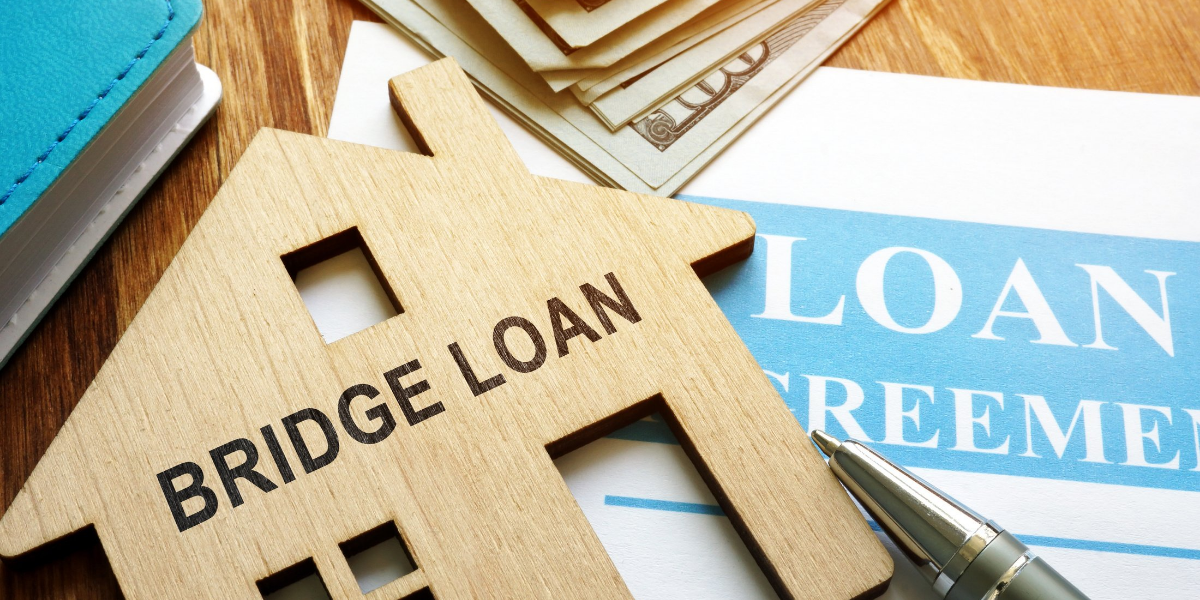As a real estate investor, there are many times you need access to financing quickly. If you need to buy before you sell or sell an old property without contingency, there’s a temporary financing option for you: it’s called a bridge loan.
Bridge loans make otherwise impossible real estate deals a possibility. They go by quite a few names (gap financing, interim financing, a swing loan, or caveat loan), but most bridge loans operate quite similarly.
Below, we’re going to break down everything you need to know about bridge loans. We’ll start with the obvious question: what is a bridge loan? Next, we’ll dive into how bridge loans work, pros and cons of bridge loans, real-life examples of bridge loans in action, and more.
What Is a Bridge Loan: Explained
Bridge Loan Definition: A bridge loan (also known as bridge financing or gap financing) is a short-term loan used to provide immediate funds to bridge a financial gap.
Many investors use bridge loans for real estate deals where quick access to capital is needed for a specific purpose. Bridge loans are typically secured by collateral, such as real estate or other valuable assets.
These loans are offered anywhere from 3.25% to 10.5% higher interest rates than other standard loans. The interest rate depends on the loan amount and the capacity to repay.
However, since they are short-term loans, the application and underwriting process is faster.
This type of loan is often needed to bridge the time between buying a property and selling another. It’s used when you need the equity from your current property for the down payment on a new property.
This type of loan is also great for businesses that need to cover operating expenses while waiting for other long-term funding.
Key Features of a Bridge Loan
Here are the key features and uses of a bridge loan:
- Short-Term Nature: Bridge loans have relatively short repayment periods, usually ranging from a few months to a couple of years. They are intended to serve as a temporary solution until a longer-term financing option becomes available or a specific event occurs (such as the sale of a property).
- Quick Access to Funds: Bridge loans are known for their fast approval and funding process, making them suitable for situations where time is of the essence.
- Interim Financing: Bridge loans act as interim financing when a borrower needs immediate funds but is awaiting a more permanent source of capital, such as securing a mortgage or receiving investment proceeds.
- Real Estate Transactions: In real estate, bridge loans can help buyers secure a new property before selling their current one. They provide the flexibility to close on a new property quickly and avoid missing out on opportunities.
- Fix-and-Flip Projects: Real estate investors may use bridge loans to acquire properties, renovate them, and then sell them quickly for a profit.
- Business Operations: Businesses can use bridge loans to cover operating expenses, manage cash flow gaps, or seize time-sensitive growth opportunities.
- Collateral-Based: Bridge loans are often secured by collateral, which could be real estate, inventory, equipment, or other valuable assets. The collateral provides security for the lender in case the borrower defaults.
- Higher Interest Rates and Fees: Due to the short-term and fast nature of bridge loans, they typically come with higher interest rates and fees compared to traditional longer-term loans.
- Exit Strategy: Borrowers must have a clear exit strategy for repaying the bridge loan, whether it’s through the sale of an asset, securing longer-term financing, or other means.

How Does a Bridge Loan Work?
Bridge funding works differently depending on the given situation.
When taken out for commercial purposes, a bridge loan provides real estate investors with the financing they need to use on a short-term basis until a long-term source of financing becomes available.
Several elements determine the amount you can borrow, which affects the interest and associated fees you pay. Typically, a bridge loan will not exceed 80% of the property value.
Once an amount is decided, the borrower has until the end of the term to pay the loan in full. Often, extensions are given to investors if they have applied for a commercial mortgage and the long-term financing has not been provided by the end of the term.
Here’s an example of how a bridge loan works to make things a bit more clear.
Let’s say you apply for a bridge loan for $80,000, the current property is worth $110,000, and you have $60,000 in an existing mortgage.
The bridge loan would pay for the $60,000 mortgage and associated closing costs, and the remaining money would be used for a down payment on the next purchase.
Common Reasons to Use a Bridge Loan
Here are a few of the most common use cases for a bridge loan:
- Property Swap: Purchasing a property while selling another.
- No Contingency Offer: You found a property or a home, but the seller doesn’t accept a contingency offer.
- Down Payments: Down payment funds are needed immediately.
- Waiting for Financing: Sold current property and are waiting for long-term financing.
- Fix-and-Flip Ventures: Real estate investors often rely on bridge loans to purchase properties, renovate them quickly, and then sell them for a profit within a short timeframe.
- Property Development: Developers may use bridge financing to acquire land or property for development. This gives them time to secure necessary permits and approvals before transitioning to long-term construction financing.
- Property Upgrades and Repairs: Property owners can access bridge loans to finance renovations and repairs.
- Transitioning Between Financing: Individuals or businesses transitioning from one form of financing to another, such as switching from a construction loan to a long-term mortgage, may use a bridge loan to bridge the gap.
- Opportunistic Investments: Investors may leverage bridge loans to take advantage of unique investment opportunities that require prompt funding. These include distressed asset purchases or undervalued properties.

Bridge Loan Pros and Cons
The most significant advantage bridge funding provides real estate investors is the ability to place a contingency-free offer on the property or home. In addition, it allows for swift movement of money so you can get the property or home you desire.
However, bridge loans come with higher interest rates and additional fees. Plus, there’s the matter of time that you have to pay back the loan. This is risky due to unexpected circumstances that may arise.
Below is a quick breakdown of the advantages and disadvantages of bridge loans.
Pros of Bridge Loans
- Short-term loan
- Ability to choose the repayment options
- Quick access to the loan
- Flexible underwriting
- Overcomes the issues relating to cash-flow
Cons of Bridge Loans
- Hefty interest rate
- May increase the debt burden
- May have prepayment penalties
- It must be paid before the traditional loan
- Requires collateral such as real estate
- Not everyone qualifies (great credit is a must)
- Additional closing costs and fees (loan origination fee, notary fee, escrow fee, etc.)

Alternatives to Bridge Loans
Bridge loans are a great resource to have when you need funds fast and don’t have access to long-term financing.
However, these types of loans are risky, come with a higher interest rate, and only last for one year.
Therefore, it’s worth looking at these alternatives to bridge loans:
Home Equity Loans
As the name suggests, home equity loans let investors borrow against their equity in a home or property. Rates generally start at 2% above average. And unlike other options, this type of loan comes in a lump sum payment.
This alternative may work best for someone who knows exactly how much they need to borrow to cover the operating costs of down payments.
HELOC (Home equity line of credit)
Unlike a home equity loan, HELOC allows borrowers to draw against the equity as-needed. This option generally has repayment periods of up to 20 years – meaning you have longer to pay the debt. Like home equity loans, interest rates for HELOCs are typically around 2%.
Personal Loan
Personal loans allow you to borrow a specific amount of money at a fixed term and interest rate. This means you have a more extended amount of time to pay back the loan and sometimes at a better interest rate than other loans.
Bridge Funding for Real Estate Investors
A bridge loan offers several significant advantages for investors, but it’s essential to know it’s a risky proposition when it comes to finances.
At Yieldi, our bridge loan program is perfect for those in need of a temporary funding source until a traditional, long-term source of financing is secured. In addition, we’re known for providing hard-money loans to investors looking to cash out their equity quickly.
Our loan terms for bridge funding are some of the best, with $0 processing fees, fast closing in as little as five business days, loan amounts ranging from $50,000 to $5,000,000, and much more.
Contact our team today for more information about our borrower program and the loans we offer!
We do our best work when clients need funding fast!

